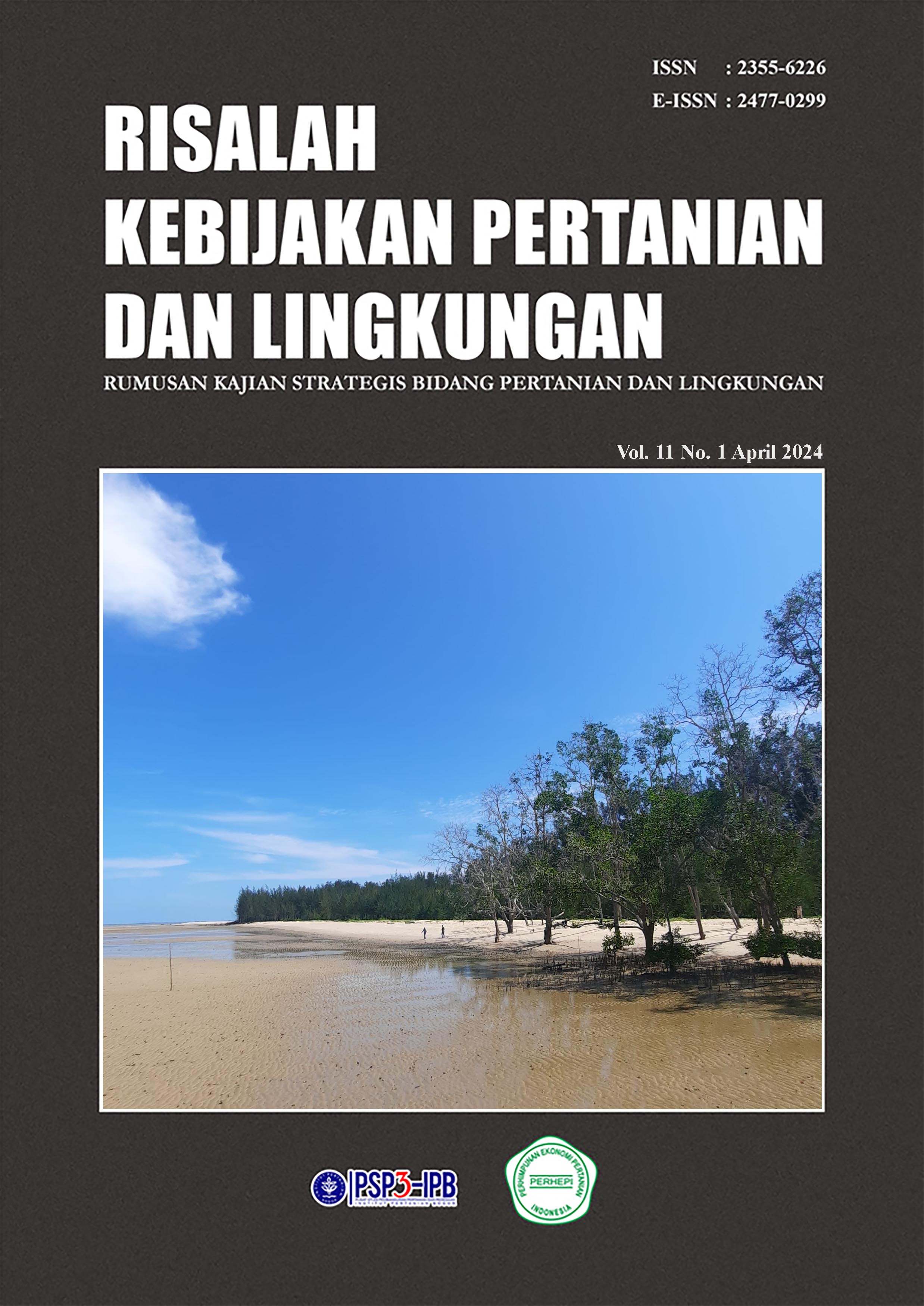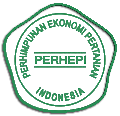EFEKTIVITAS BUDIDAYA IKAN LELE DENGAN RECIRCULATING AQUACULTURE SYSTEM (RAS) DI SUJAFISH FARM, KECAMATAN CIKOLE, KOTA SUKABUMI
Abstrak
Ikan lele mulai dibudidayakan oleh UMKM Sujafish Farm Kecamatan Cikole, Kota Sukabumi pada awal tahun 2023. Lahan budidaya perkotaan yang semakin sempit, biaya pakan semakin mahal, dan ketersediaan air yang terbatas menjadi kendala pengembangan budidaya ikan air tawar di Kota Sukabumi. Salah satu solusi untuk menyiasati hal tersebut adalah pengembangan teknologi Recirculating Aquaculture System (RAS). RAS adalah teknologi budidaya dimana air dapat digunakan kembali setelah difilter secara mekanis dan biologis. Wadah pemeliharaan menggunakan bak bulat berdiameter 2 m dan diisi air dengan ketinggian 0,8 m berjumlah 6 bak. Volume air dalam setiap bak yaitu 2.152 L air. Benih yang digunakan berukuran 8–10 cm dengan kepadatan per bak 318 ekor/m2. Parameter pengamatan yang dilihat adalah suhu, pH, DO, amoniak, nitrit, nitrat, dan pertumbuhan ikan. Aplikasi RAS membuktikan dapat menjaga kualitas air suhu, pH, DO, dan amoniak. Nilai pertumbuhan dan kelangsungan hidup sistem RAS lebih tinggi dibandingkan sistem sirkulasi, sehingga teknologi RAS dapat menjadi alternatif solusi teknologi budidaya ramah lingkungan di daerah perkotaan.
##plugins.generic.paperbuzz.metrics##
Unduh
Referensi
[BPS] Badan Pusat Statistik. 2022. Nilai Produksi Ikan Segar Menurut Kecamatan Tahun 2020-2022. Badan Pusat Statistik Kota Sukabumi.
[BSN] Badan Standarisasi Indonesia. 2014. Standar Nasional Indonesia 6484.3 tentang Produksi Ikan Lele Dumbo. Jakarta: BSN.
Boyd, C.E. 2015. Overview of Aquaculture Feeds: Global Impacts of Ingredient Use. Dalam Davis, D.A. Woodhead Publishing Series in Food Science, Technology and Nutrition, Feed and Feeding Practices in Aquaculture. UK: Woodhead Publishing.
Efendi, H. 2003. Telaah Kualitas Air Bagi Pengelolaan Sumber Daya dan Lingkungan Perikanan. Jakarta: Kanisius.
Efendi, H., Kaswanto, R.L., Wardiatno, Y., Bengen, D.G., Setiawan, B.I., Pawitan, H., Soetarto E, Damayanthi, E., Arifin, H.S., Widanarni. 2022. Water Front City: Kota Tepian Air Ramah Lingkungan. Policy Brief Dewan Guru Besar IPB University.
Eruola, A.O., Ufoegbune, G.C., Awomeso, J.A., Abhulimen, S.A. 2011. Assessment of Cadmium, Lead and Iron in Hand Dug Wells of Ilaro and Aiyetoro, Ogun State, South-Western Nigeria. Res. J. Chem. Sci., 1, 1–5.
Fadhil, R., Endan, J., Taip, F.S. 2010. Teknologi Sistem Akuakultur Resirkulasi untuk Meningkatkan Produksi Perikanan Darat di Aceh. Prosiding, Aceh Development International Conference yang diselenggarakan oleh Faculty of Engineering, Universiti Putra Malaysia, tangga 26-28 Maret 2010. Selangor: Universiti Putra Malaysia.
Indriastuti, C.E., Ratnawati, B., Budiharto, I.V. 2022. Survival and growth Performance the Catfish Clarias gariepinus in High Density Nurseries Using Recirculating Aquaculture System (RAS). E3S Web of Conference, 348, 00013. https://doi.org/10.1051/e3sconf/202234800013.
Karima, A., Kaswanto, R.L. 2017. Land Use Cover Changes and Water Quality of Cipunten Agung Watershed Banten. IOP Conference Series: Earth and Environmental 54, 111.
Kaswanto, R.L., Arifin, H.S., Nakagoshi, N., 2012. Water quality index as a simple indicator for sustainability management of rural landscape in West Java, Indonesia. International Journal of Environmental Protection, 2(12), 17.
Lovell, T. 1998. Nutritional And Feeding of Fish. (2th ed.). New York: Springer.
MAAIF. 2018. Essentials of Aquaculture Production, Management and Development in Uganda. Ministry of Agriculture, Animal Industry and Fisheries (MAAIF).
Maniani, A.A., Tuhumury, R.A.N., Sari, A. 2016. Pengaruh Perbedaan Filterisasi Berbahan Alami dan Buatan (sintetis) Kualitas Air Budidaya Lele Sangkuriang dengan Sistem Resirkulasi Tertutup. The Journal of Fisheries Development, 2(2), 17–34.
Martins, C.I.M., Eding, E.H., Verdegem, M.C.J., Heinsbroek, L.T.N., Schneider, O., Blancheton, J.P., Roque D’Orbcastel, E., Verreth, J.A.J. 2010. New Developments in Recirculating Aquaculture Systems in Europe: A perspective on environmental sustainability. Aquaculture Engineering, 43(3), 83-93. https://doi.org/10.1016/j.aquaeng.2010.09.002.
Mony, A. 2017. Pengembangan nelayan berbasis kearifan lokal: Sebuah pendekatan socio-legal analysis. Risalah Kebijakan Pertanian dan Lingkungan Rumusan Kajian Strategis Bidang Pertanian dan Lingkungan, 3(3), 188-204. https://journal.ipb.ac.id/index.php/jkebijakan/article/view/16254.
Mosyaftiani, A., Kaswanto, R.L., Arifin, H.S. 2018. Potensi tumbuhan liar di sempadan terbangun Sungai Ciliwung di Kota Bogor sebagai upaya restorasi ekosistem sungai. Risalah Kebijakan Pertanian dan Lingkungan Rumusan Kajian Strategis Bidang Pertanian dan Lingkungan, 5(1), 1-13. https://doi.org/10.29244/jkebijakan.v5i1.29781.
Muarif, Y. Wahyudin, D., Merdekawati, Mulyana, Mumpuni, F.S. 2020. Survival rate and feed convertion ratio of milkfish in different silvoaquaculture ponds. Prosiding, Proceedings of the International Seminar on Promoting Local Resources for Sustainable Agriculture and Development. Atlantis Press.
Muhartono, R., Nurlaili. 2022. Konsep pemberdayaan masyarakat bantaran sungai dengan kegiatan budidaya keramba Ikan Arus Deras (Kasus Sungai Pesanggrahan di DKI Jakarta). Risalah Kebijakan Pertanian dan Lingkungan Rumusan Kajian Strategis Bidang Pertanian dan Lingkungan, 9(1), 52-60. https://doi.org/10.29244/jkebijakan.v9i1.28065.
Muhatir, L. S., Diniarti, N., Mukhlis, A. 2023. Pertumbuhan Ikan Lele Sangkuriang (Clarias gariepinus) pada Sistem resirkulasi. Jurnal Medika Akuakultur, 3 (2), 67-79. https://doi.org/10.2991/absr.k.210609.007.
Phillips, M., Henriksson P.J.G., Tran, N. Chan, C.Y., Mohan, C.V., Rodriguez, U.P., Suri, S., Hall, S., Koeshendrajana, S. 2016. Menjelajahi Masa Depan Perikanan Budidaya Indoneseia. Malaysia: WorldFish.
[PRI] Pemerintah Republik Indonesia. 2001. Peraturan Pemerintah Republik Indonesia Nomor 82 Tahun Tentang Pengelolaan Kualitas Air dan Pengendalian Pencemaran Air. Jakarta: Sekretariat Negara.
Rahayu, A.P., Farid, M. 2018. Analisa usaha budidaya Ikan Lele Masamo (Clarias Gariepinus) Kecamatan Kambangbahu Kabupaten Lamongan. Grouper, 9(1), 8-13. https://doi.org/10.30736/grouper.v9i1.27.
Savidov, N. 2004. Evaluation and Development on Aquaponics Production and Product Market Capabilities in Alberta. Crop Diversification Centre South, Alberta Agriculture, Food and Rural Development.
Shaffitri, L.R., Syaukat, Y., Ekayani, M. 2016. Peranan Bumdes dalam pengelolaan limbah cair tahu dan pemanfaatan biogas. Risalah Kebijakan Pertanian dan Lingkungan: 2(2), 136-143. https://journal.ipb.ac.id/index.php/jkebijakan/article/view/10984.
Summerfelt, S.T., Sharrer, M.J., Tsukuda, S.M., Geartheart, M. 2009. Process requirements for archieving full flow disinfectan of recirculating water using ozonitation and UV irradiation. Aquaculture Engineering, 40(1), 17-27. https://doi.org/10.1016/j.aquaeng.2008.10.002.
Sutrisno, A.J., Kaswanto, R.L., Arifin, H.S. 2018. Spatial and temporal distribution of nitrate concentration in Ciliwung River, Bogor City. IOP Conference Series: Earth and Environmental Science, 179, 1. https://doi.org/10.1088/1755-1315/179/1/012039.
Tokah, C., Undap, S.L., Longdong, S.N.J. 2017. Kajian kualitas air pada area budidaya Kurungan Jaring Tancao (KJT) di Danau Tutud Desa Tombatu tiga Kecamatan Tombatu Kabupaten Minahasa Tenggara. Budidaya Perairan, 5(1), 1-11. https://doi.org/10.35800/bdp.5.1.2017.14837.
Verdal, H.D. et al. 2018. Improving feed efficiency in fish using selective breeding: A review. Rev. Aquac, 10(4), 833–851.
Verdegem, M.C.J., Bosma, R..H., Verreth, J.A.J. 2006. Reducing water use for animal production through aquaculture. International Journal Water Resource Dev, 22, 101-113. https://doi.org/10.1080/07900620500405544.
##submission.copyrightStatement##
##submission.license.cc.by4.footer##PUBLICATION ETHICS
Jurnal Risalah Kebijakan Pembangunan Pertanian dan Lingkungan (JRKPL) is a peer-reviewed journal publishing original research to develop a coherent and respected network of landscape architecture knowledge. JRKPL committed to upholding the highest standards of publication ethics that clarifies ethical behavior of all parties involved in publishing a scientific article in JRKPL.
As publisher of JRKPL, PSP3-LPPM IPB and PERHEPI takes its duties of guardianship all stages of publishing process and we recognize our ethical and other responsibilities.
Duties of Authors
An author should not publish manuscripts describing essentially the same research in more than one journal or primary publication. Submitting the same manuscript to more than one journal is unacceptable and constitutes unethical publishing behavior. In general, an author should not submit for consideration in another journal a previously published paper.
Authorship should be limited to those who have made a significant contribution to the manuscript and should be listed as co-authors. Where there are others who have participated in certain substantive aspects of the research project, they should be acknowledged as contributors. The corresponding author should ensure that all co-authors have seen and approved the final version of the paper and have agreed to its submission for publication.
The authors should ensure that they have written entirely original works, and if the authors have used the work and/or words of others, that this has been appropriately cited or quoted. Plagiarism are include passing off another paper as the author own paper, copying or paraphrasing substantial parts of another paper (without attribution) and claiming results from research conducted by others. Plagiarism constitutes unethical publishing behavior and is unacceptable. Plagiarism detected works will be banned for further publication procedure.
The authors acknowledge that they have disclosed all and any actual or potential conflicts of interest with their work or partial benefits associated with it. All sources of financial support for the project should be disclosed. Potential conflicts of interest should be disclosed at the earliest stage possible.
Duties of the Editorial Board
Review Process
JRKPL is committed to objective and fair double-blind peer-review to prevent any actual or potential conflict of interests between the editorial and review personnel and the reviewed material. JRKPL chooses reviewers based on their expertise (whose most closely matches the topic of the paper). At least 2 reviewers are invited to evaluate a manuscript. In cases of controversy or disagreement regarding the merits of the work, an additional review will be solicited. The JRKPL editor mediates all interaction between authors and reviewers, and the review results owned by JRKPL.
Publication Decisions
The editor of a peer-reviewed JRKPL is responsible for deciding which of the articles submitted to the journal should be published. The validation of the work in question and its importance to researchers and readers must always drive such decisions. The final decision on article acceptance based on reviewer's opinions, suggestions, and comments. The editor may confer with other editors or reviewers in making this decision.
Fair Play
JRKPL evaluates manuscripts only based on the intellectual content. No race, gender, sexual orientation, religious belief, ethnic origin, citizenship, or political philosophies of the authors are considered in the evaluation process.
Confidentiality
JRKPL assure the confidentially of the manuscripts, actors, and other related information on the publishing process. Only corresponding author, reviewers, potential reviewers, other editorial advisers, and the publisher are allows for the information.
Disclosure
Unpublished materials disclosed in a submitted manuscript must not be used in an editor's own research without the express written consent of the author. Privileged information or ideas obtained through peer review must be kept confidential and not used for personal advantage.
Duties of reviewers
(1) Objectivity: Reviewer should provide written and unbiased feedback to the authors, personal criticism of the author is inappropriate. Reviewer comments should be clearly with supporting arguments indicating whether the writing is concise and relevant
(2) Expertise: Reviewer who feels unqualified to review the research reported in a manuscript or knows that its prompt review will be impossible should notify the editor and excuse himself from the review process.
(3) Acknowledgement of sources: Reviewer suggest relevant published work that has not been cited by the authors to improve the quality of the manuscript,
(4) Confidentiality: Reviewer should maintain the confidentiality of the review process. Privileged information or ideas obtained through peer review must be kept confidential and not used for personal advantage.
(5) Disclosure and conflict of interest: Unpublished materials disclosed in a submitted manuscript must not be used in a reviewer own research without the express written consent of the author. Reviewers should not consider manuscripts in which they have conflicts of interest resulting from competitive, collaborative, or other relationships or connections with any of the authors, companies, or institutions connected to the papers.






















